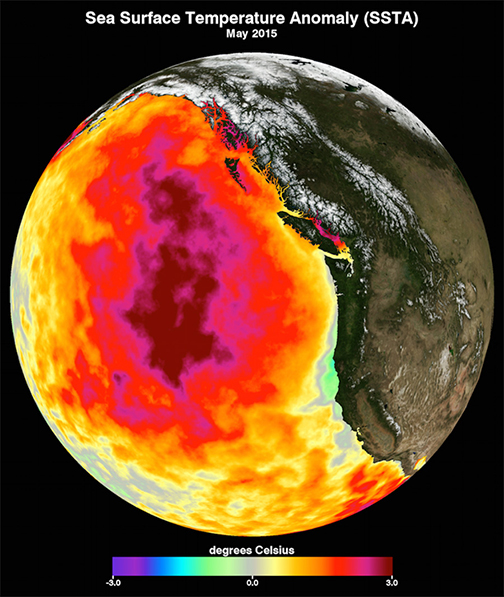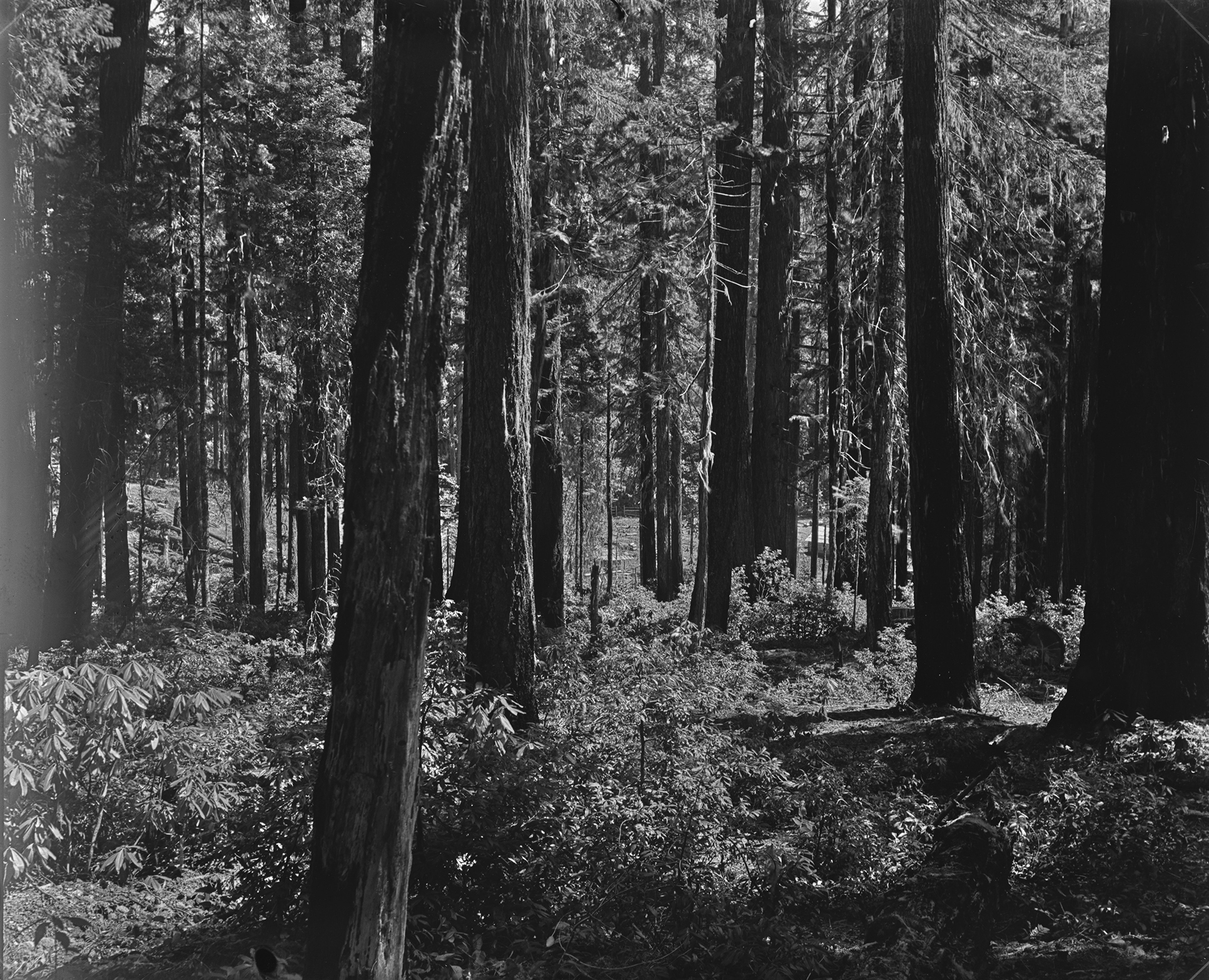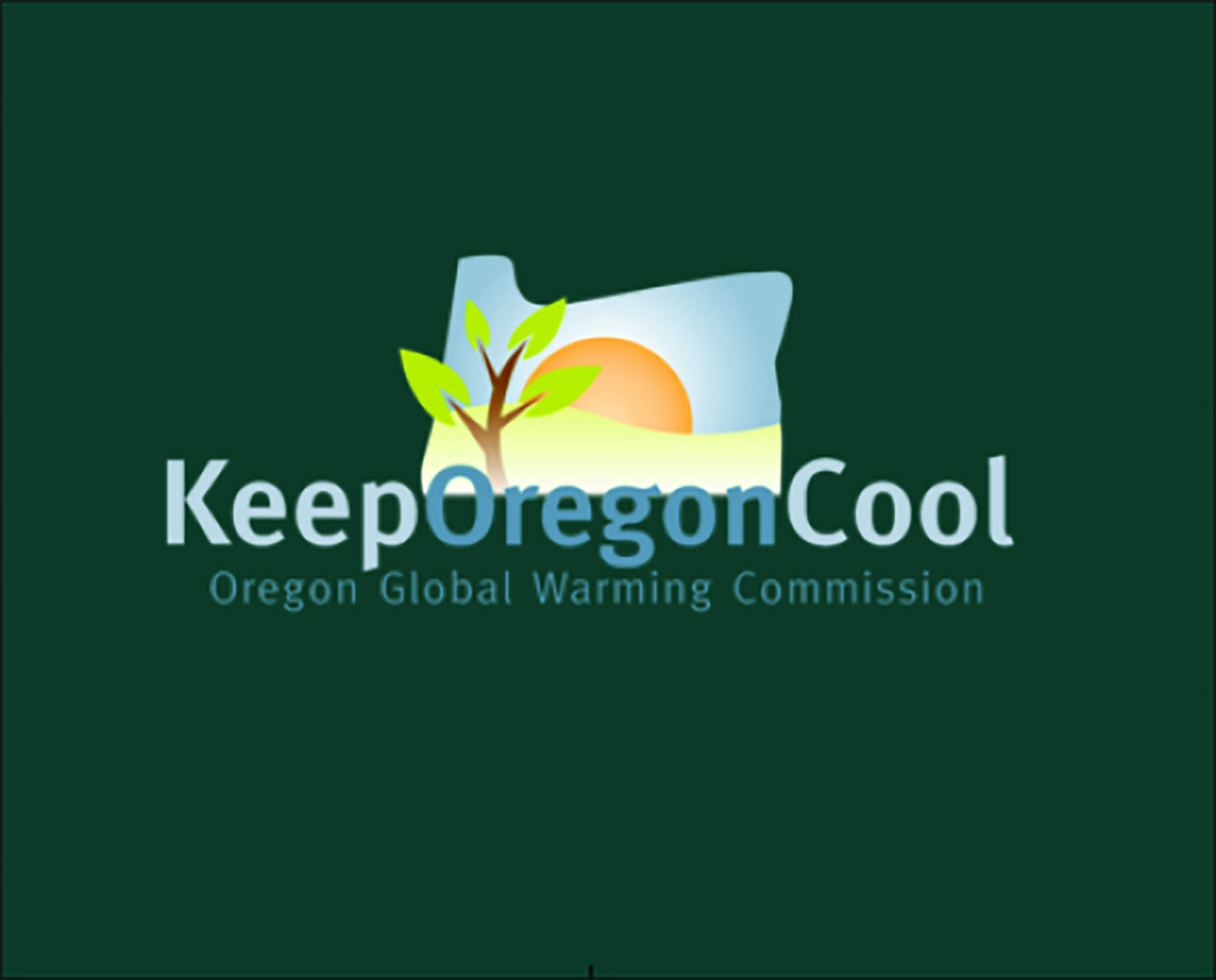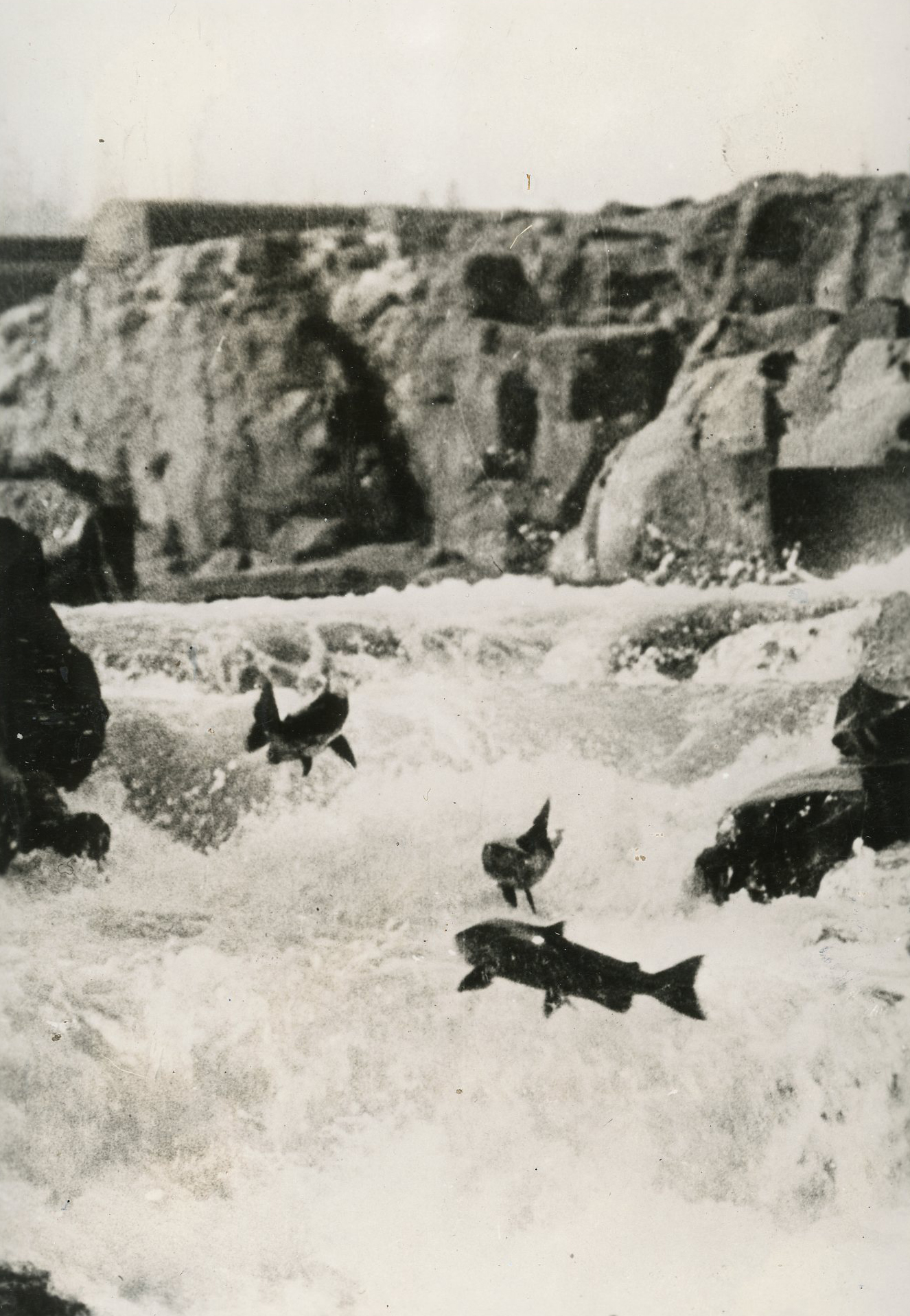From December 2013 to August 2016, the northeast Pacific Ocean experienced a severe marine heatwave, or warm water event, known as the Blob. Like all marine heatwaves, the Blob was characterized by warmer-than-average ocean temperatures that lasted for a prolonged period. The heatwave was unusual because it lasted for 711 days, making it one of the longest marine heatwaves ever recorded on Earth. Collectively, the Blob’s vast scale, extreme temperatures, and extended duration caused dramatic changes in the abundance, distribution, diversity, and health of organisms, including some wildlife species that experienced mass mortality. It was an ominous harbinger of future ocean conditions on a warming planet.
The Blob spanned from the Gulf of Alaska to Baja California, although its intensity, duration, and effects varied throughout the northeast Pacific. At the ocean-basin scale, the heatwave reached peak intensity in July 2015 when sea surface temperatures rose to 2.6°C (4.8°F) above the interannual mean (that is, the multiyear average). On the Oregon Coast, the highest sea surface temperature anomalies occurred from fall 2014 to summer 2015. Beneath the surface, the severe temperatures extended to depths of up to 140 meters (460 feet). The anomalies were caused by complex interactions between processes occurring in the oceans (oceanographic) and those occurring in the atmosphere (meteorologic). For example, instances of high atmospheric pressure over the ocean cause air to sink and warm, reducing the rate of heat loss from the sea surface. This happened during winter 2013, followed by an El Niño event, leading to warmer than average ocean waters.
In Oregon, the ecological effects of the Blob were evident at every level of the food web. At the base of coastal ecosystems, macroalgae (large algae and kelps, for example) and plants are susceptible to temperature stress, and the elevated temperatures associated with the Blob and the concurrent El Niño reduced the health of several kelp species. Native eelgrass declined in northern Oregon estuaries where water became too hot, but eelgrass increased marginally in southern Oregon likely due to the warming of normally cold estuarine water.
Phytoplankton are also at the bottom of most marine ecosystems, and their abundance in the Pacific Northwest increased from summer 2014 to summer 2015. Several types of phytoplankton produce toxic chemicals, and a record-breaking harmful algal bloom (HAB) coincided with the Blob. The bloom grew into one of the largest and most severe ever documented, stretching from southern California to the Aleutian Islands. Lasting from May to October 2015, the HAB was implicated in the death of predators such as sea lions and seabirds because of biomagnification, a process in which increasing concentrations of toxins accumulate at higher and higher levels up the food chain.
The Blob also caused changes in zooplankton, particularly copepods and krill, which are vital food for many organisms. Typically, colder water from the Gulf of Alaska moves south in the spring, bringing with it northern copepod species that replace smaller and less nutritious southern copepod species. In 2015, however, northern copepods did not appear, and krill populations dramatically declined. These declines adversely affected many organisms that rely on zooplankton, leading to the mass mortality of the Cassin’s auklet (a seabird), the loss of forage fishes, and poor returns of salmon to the Columbia Basin.
In turn, the loss of forage fishes triggered significant population declines in the common murre, the dominant fish-eating seabird in the Pacific Northwest. Nearly two thousand dead or emaciated common murres washed up on Oregon beaches between May 2015 and April 2016. At the top of the food web, baleen whales, California sea lions, and Guadalupe fur seals all suffered from starvation and the effects of the harmful algal bloom, leading to the animals being stranded on beaches.
The Blob and its associated physical and ecological effects led many Oregonians to suffer as well. The harmful algal bloom that occurred during the marine heatwave was dominated by diatoms that produce the potent neurotoxin domoic acid, which can cause disability and death in seabirds and marine mammals. In humans, ingesting seafood contaminated with domoic acid can cause amnesic shellfish poisoning, with symptoms including vomiting, nausea, diarrhea, and abdominal cramps within twenty-four hours. In more severe cases, neurological symptoms develop within forty-eight hours and include headache, dizziness, confusion, disorientation, short-term memory loss, motor weakness, seizures, cardiac arrhythmias, coma, and even death.
Both recreational and commercial fisheries closed due to unprecedented levels of toxins, resulting in industry losses of as much as $70 million. In Oregon, the statewide closure of the razor clam harvest and the delayed opening of the Dungeness crab fishery, which ranges from central California to the Gulf of Alaska, affected fishing communities and the livelihoods of many people. As a small boost to tourism, the warm water caused by the Blob also brought unusual species of whales, such as the rare Bryde’s whale, to many parts of the West Coast, boosting interest in whale-watching.
Marine heatwaves like the Blob are one of many symptoms of climate change. From 1925 to 2016, the global average frequency of marine heatwaves increased by 34 percent, and the duration of those warm water events increased by 17 percent. Compared to the rest of the world, the northeast Pacific Ocean has experienced some of the highest temperature anomalies over the past century. Global climate models project significant increases in marine heatwave intensity and duration, with many parts of the ocean reaching a near-permanent heatwave state by the late twenty-first century. Oregon’s coastal ocean is projected to experience significant increases in the average number of marine heatwave days per year.
Predicting marine heatwaves is a nuanced science, and additional research is needed to assess predictability limits, ecological and socioeconomic effects, and physical drivers such as the composition of the atmosphere and the effects of clouds. The study of the Blob’s impact on the people and ecosystems in Oregon allows scientists and policymakers to understand and potentially mitigate the effects of warming oceans around the world.
-
![The red, pink and yellow Blob represents an increase of up to 5 degrees higher than average.]()
Average sea surface temperatures for May 2015..
The red, pink and yellow Blob represents an increase of up to 5 degrees higher than average. Courtesy NASA -
![Hundreds of dead birds washed up along the Oregon Coast in 2015, including common murres. Similar die-offs continued into 2023.]()
Related Entries
-
![Climate Change in Oregon]()
Climate Change in Oregon
Within a few hundred miles in Oregon, you can see snowy volcanoes, parc…
-
![Oregon Climate Change Research Institute]()
Oregon Climate Change Research Institute
The Oregon Climate Change Research Institute was established in 2007 to…
-
![Oregon Forests and Climate Change]()
Oregon Forests and Climate Change
How climate change affects Oregon forests and how those forests affect …
-
![Oregon Global Warming Commission]()
Oregon Global Warming Commission
The Oregon legislature created the Oregon Global Warming Commission in …
-
![Salmon]()
Salmon
The word “salmon” originally referred to Atlantic salmon (Salmo salar),…
Map This on the Oregon History WayFinder
The Oregon History Wayfinder is an interactive map that identifies significant places, people, and events in Oregon history.









